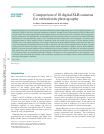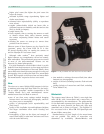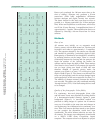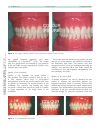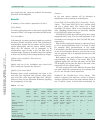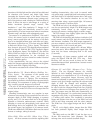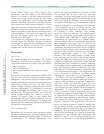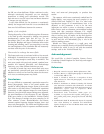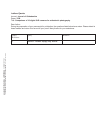
N
higher pixel count (the higher the pixel count the
larger the image);
N
increased dynamic range (reproducing lighter and
darker areas better);
N
advanced color reproducibility (ability to reproduce
more colors);
N
tougher camera-bodies (which are better able to
withstand exposure to humidity and dust and are less
likely to break on impact);
N
longer battery life;
N
faster response time to turning the camera on and/
or shutter release delay (delay between turning
the camera on/pressing shutter release and actual
exposure);
N
cleaning the sensor on start-up (to remove dust
particles from the sensor).
However some of these features are also found in the
‘prosumer’ group; the Canon EOS 20 D is fast:
0.2 second response delay on turning the camera on
and the Olympus E1 has sensor clean.
Although other authors
2,3
have previously tested
digital cameras, no comprehensive review has recently
been undertaken. The professional group was not tested
as most of the above-mentioned features are not
necessary for dental photography.
For good illumination a macro-flash is ideal: it avoids
shadows from cheek retractors at close range and allows
for homogeneous illumination of the teeth. Ideally, these
macro-flash units should be strong enough for extra-oral
photography; thus, avoiding the need for a second flash
system. With regards to the macro-lens and macro-flash
the manufacturers’ respective devices were tested.
Aim
The aim was to assess 10 digital SLR cameras in the low
to medium price range (less than 2500 J for the body),
the so called ‘prosumer’ models (comparable to the
‘Yashica Dental Eye’) with manufacturers’ recom-
mended macro-lens and flash in terms of:
N
ease of use (how many settings needed changing
between intra- and extra-oral photography, and how
easy these were to accomplish);
N
quality of photographs (color reproducibility and
pixel count);
N
quality of the viewfinder: size and brightness (brighter
and larger viewfinders allow easier focusing and
handling);
N
homogeneity of light on the object and strength of
macro-flash (ability to take intra- and extra-oral views
with the same flash unit);
N
time needed to recharge the macro-flash (time taken
between two photographs);
N
weight of the unit (including batteries, flash-unit and
lens);
N
pricing (inclusive of macro-lens and flash, excluding
Value Added Tax).
Materials
The cameras tested (shown in Table 1) were single lens
reflex (SLR), with a macro-flash and a macro-lens, as
recommended by the manufacturer. The guide-number
for the flash-units represent their power: the higher the
number the more powerful the flash unit. One such
assembled unit is shown in Figure 1. The Fujifilm S 3
Pro was tested with a Nikon SB 29S Speed-light and
60 mm Nikkor macro-lens.
Standardization of focal length of the macro-lenses
was not possible. The choice of macro-lens was
determined by availability (Konica-Minolta and
Journal of Orthodontics JOR3338.3d 11/7/06 19:16:57
The Charlesworth Group , Wakefield +44(0)1924 369598 - Rev7.51n/W (Jan202003)
Figure 1 Fully assembled unit with macro-lens and macro-flash
COLOUR
FIGURE
2 D. Bister et al. Features Section JO September 2006



